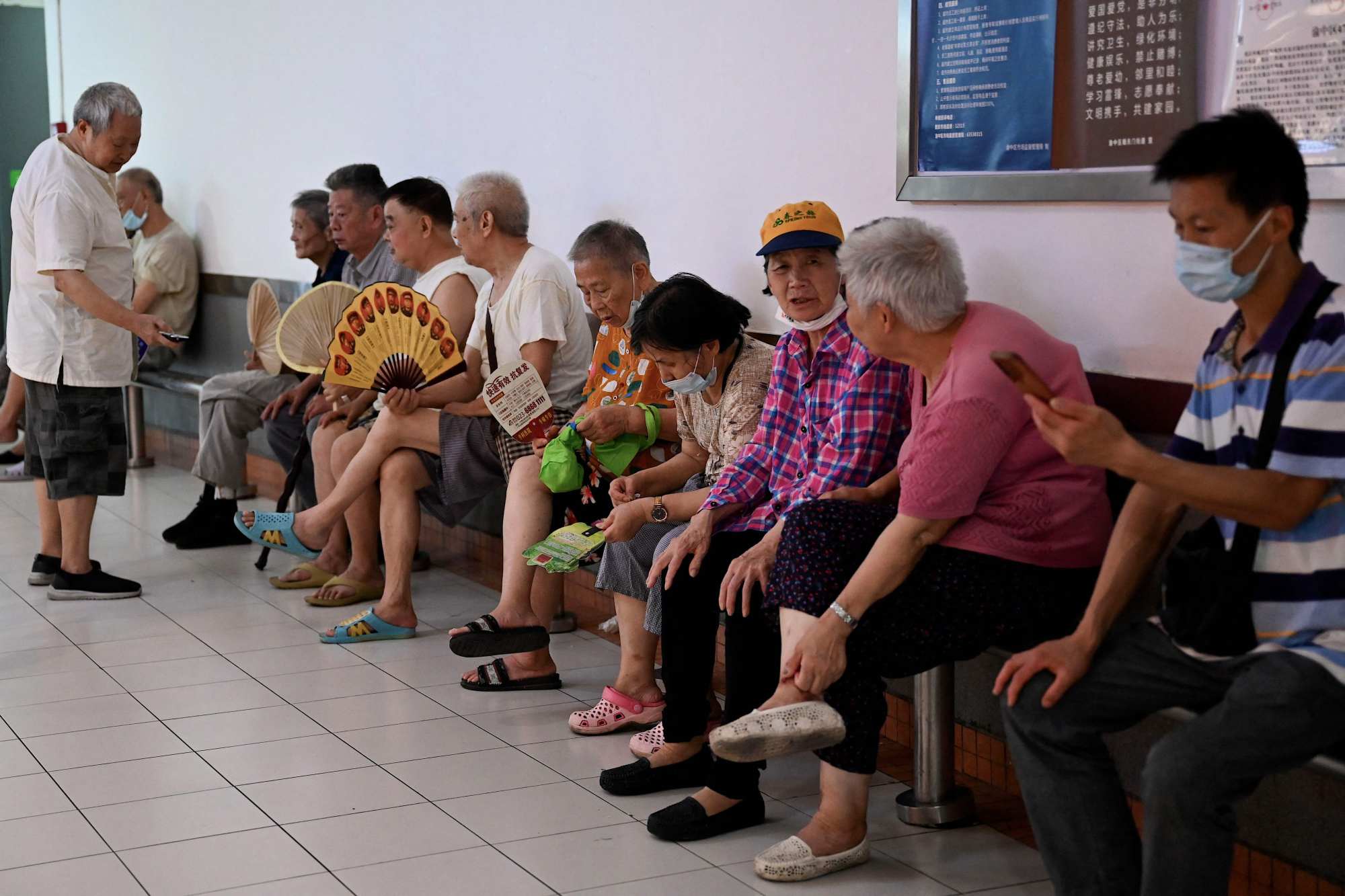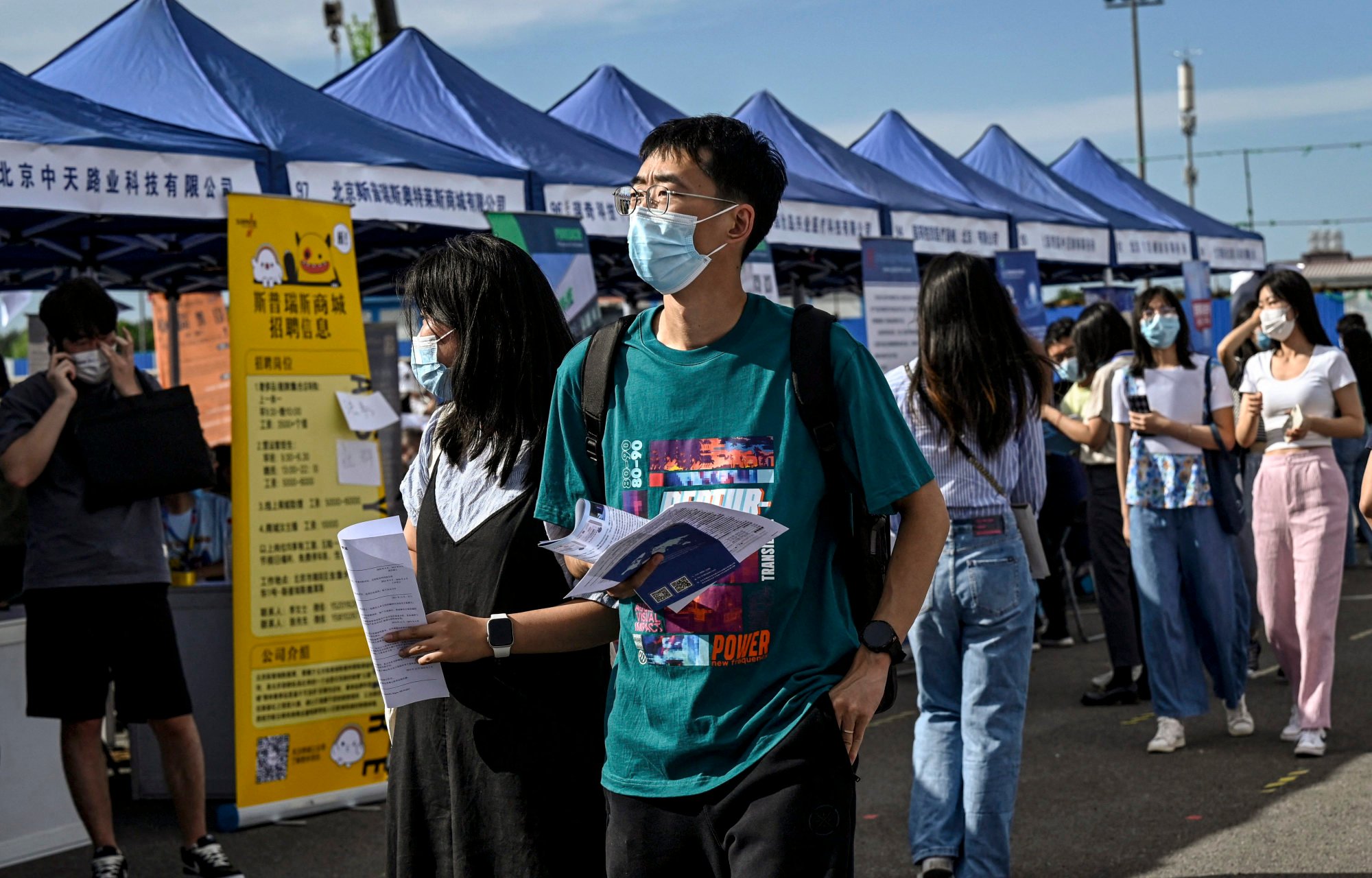
China’s shrinking working-age population to send ripples through global economy
- UN says number of Chinese aged between 15 and 64 will fall by more than 60 per cent this century
- India set to overtake China as world’s most populous country next year and age much more slowly
Disruptions to global supply chains caused by coronavirus lockdowns in China may be a short-term problem, but another challenge that will last for decades is emerging.
China county calls on retired PLA personnel to work at Foxconn’s iPhone factory
But economists say such production disruptions could be a mere blip when compared to the impending effects of the decline in China’s working-age population, a trend projected to last for decades or longer that will change the global economic landscape forever.
As a result of low fertility rates and increased longevity, populations in many developed countries are both ageing and declining, and China is not alone in experiencing these profound demographic trends.
However, as the world’s population reached 8 billion on, last month some countries were better positioned demographically. India is projected to overtake China as the world’s most populous country next year and age at a much slower pace for the rest of the century. In the United States, the working-age population is expected to largely remain the same size in 2100 as it is now.
In past decades, China’s huge working-age population, which accounted for over 70 per cent of its total population, enabled the country to become the world’s workshop and a vast consumer market. Its decline is expected to dent China’s potential economic growth and force changes in world trade and investment.
“Trend growth is basically labour force plus productivity, and China is facing poor prospects for both,” said George Magnus, a research associate at Oxford University’s China Centre and former chief economist at investment bank UBS.

“There’s a 1:1 relationship between the change in the working-age population and economic growth. So with China’s [working-age population] falling, that GDP will be lower by the same amount each year on average, unless it can be mitigated by, for example, immigration, higher labour force participation by women and older workers, and stronger productivity growth.”
S&P Global Ratings said it expected China’s annual economic growth would slow to an average of 4.4 per cent up to 2030 and then 3.1 per cent from 2031 to 2040 – down from 6 per cent between 2017 and last year. Those forecasts factored in threats including a shrinking workforce, mishandled rebalancing and slowing productivity gains, it said.
Xi Jinping sets China’s course for the next five years
Magnus said: “Science and technology are indeed of great significance to future economic prospects, but they are nowhere near large enough in the economy to offset the myriad factors that are pulling China’s growth rate down, including demographics.”
Huang Wenzheng, a demographer who has written extensively on China’s birth rate and labour issues, said a large population made it easier for innovation and technological development to prosper and succeed.
“It generates a large volume of data for technological applications and creates a big market of users,” he said. “Also, we can have more talent out of a bigger population base.”
China’s core advantage lay in its 1.4 billion population, “who are diligent, with shared language and culture and in pursuit of mundane success”, Huang said.
“They helped China to compete with the US and its allies – the UK, Canada, Australia and New Zealand and contributed greatly to China’s economic rise,” he said. “With a much lower fertility rate, China would lose the population advantage in two to three generations.”
The fertility rate in the US is 1.6 births per woman, while in ageing Japan it is 1.3. China’s fertility rate decreased from 2.6 in the late 1980s to just 1.15 last year, well below the 2.1 needed to replace deaths. That happened despite its abandonment of the one-child policy in 2016 and the introduction of a three-child policy, backed by tax and other incentives, last year.
The Chinese government has promised better access to childcare and maternity leave, but high living costs and workplace discrimination continue to deter young people from having children.
Beijing adds fertility services to insurance to aid China’s slowing birth rate
Joseph Chamie, a demographer and former director of the UN’s Population Division, said China had made “impressive achievements”, with low levels of mortality and morbidity increasing longevity. However, existing policy incentives were unlikely to turn around the demographic trends of ageing and population decline.
“While it may increase the current fertility rate somewhat, it is unlikely to raise it to the replacement level of 2.1 births per woman,” he said. “Based on the experiences of many countries, once the fertility rate falls well below the replacement level, it is difficult to raise it back to higher levels.”

One solution would be to redefine “working age” to include older people and improve the participation rate, the ratio between the labour force and the population of working age. China’s legal retirement age could gradually increase to 70, Chamie said.
In China, the legal retirement age for men is 60. For women, it is 55 for white-collar workers and 50 for blue-collar workers. Those ages have been unchanged for more than 70 years, but the looming population crisis has led the government to announce they will gradually be pushed back.
“Similar to other countries, China will face difficulties in raising its participation rate,” Chamie said. “The demands, requirements and needs of child rearing, families, households, the elderly as well as quality of life issues point to difficulties in significantly raising the participation rate.”
Louis Kuijs, S&P’s Asia-Pacific chief economist, is more optimistic.
“The experience of Japan and South Korea is useful as a benchmark,” he said. “Both are more advanced in the demographic transition. As labour became scarcer, they have seen their participation rates rise significantly in the last decade.”
Older Chinese want to rejoin the workforce, but are there enough jobs?
In Japan, where the government emphasised increasing the employment of women and older people, the participation rate rose to 71 per cent last year – up 6.4 percentage points in a decade – Kuijs said.
“In a similar vein, after declining in recent decades, China’s participation rate will remain broadly constant through 2030 and rise by three percentage points between 2030 and 2040,” he said.
China’s labour force participation rate dropped from 71 per cent in 2011 to 68 per cent last year, according to CEIC data.
The jury is still out on the effects of China’s changing demographics and whether the country faces a population crisis.
Xiujian Peng, a senior research fellow at Victoria University in Australia, said resource-exporting nations should make preparations, because “these changes are likely to require a reorientation of exports towards manufacturers outside China”.
“For importers of goods, including the United States, the source of goods is set to gradually shift towards new and emerging centres of manufacturing,” Peng wrote in an article for the World Economic Forum in July.
“Despite forecasts that this will be ‘the Chinese century’, China’s population projections suggest influence might move elsewhere – including to neighbouring India, whose population is expected to overtake China within this coming decade.”
Apple adds a new iPhone 14 supplier in India in shift from China
Magnus cautioned that if significant demographic change resulted in lower private savings in China, as well as higher age-related public spending, the era of China’s trade surpluses would soon be over, and its role as the world’s premier export hub would be diminished.
“Trade flows are related to savings and investment, which is what ageing plays into, and multinationals’ supply chains are driven by perceptions of market growth – which ageing may undermine – and geopolitical laws and regulations,” he said.




